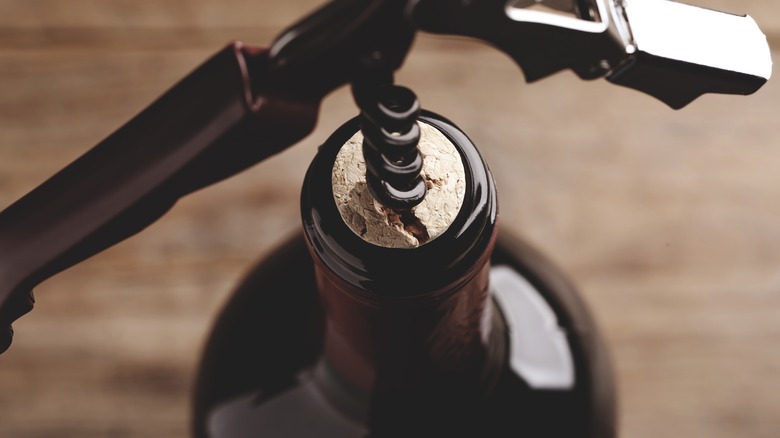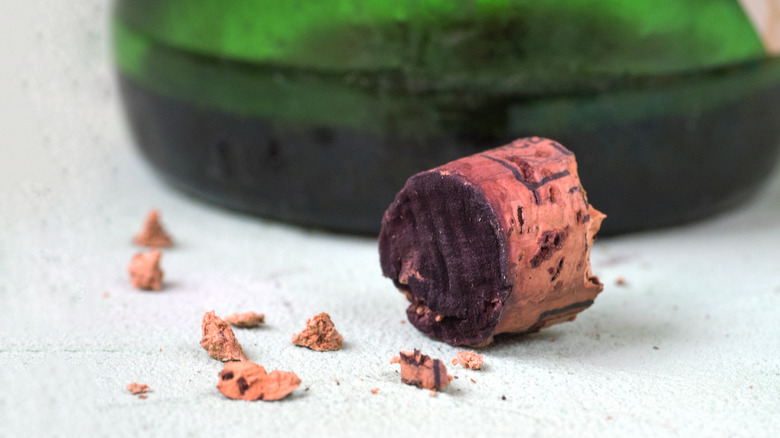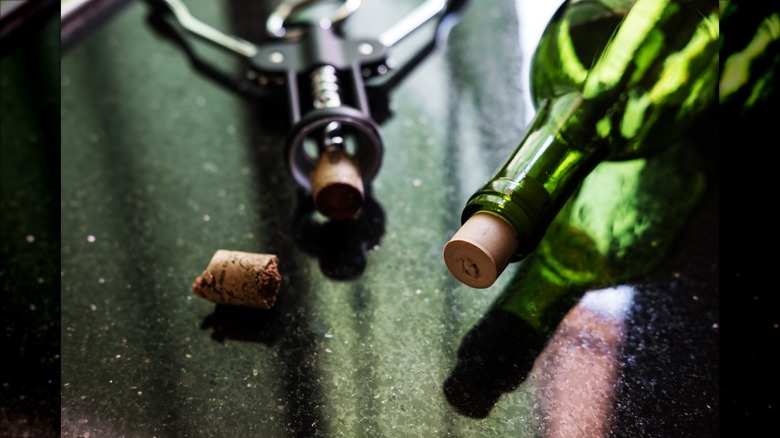How To Open A Bottle Of Wine If The Cork Breaks
We may receive a commission on purchases made from links.
Picture this: your table is set, your dinner party guests have arrived, and the only task left is to open that special bottle of wine you've been saving. You insert the corkscrew, twist, pull with anticipation, and then ... snap, the cork breaks. If you've experienced this (or if a frantic Google search brought you here after a recent cork mishap), don't worry. There are many reliable methods to salvage a broken cork from your wine and prevent this from happening with future bottles.
Firstly, it's important not to blame yourself for broken corks. It's not just you; even the most experienced wine enthusiasts and sommeliers run into the problem too. Moreover, you can take comfort in knowing that a broken cork doesn't necessarily reflect on the wine's quality. Chances are good it was still maintaining a proper seal, but, of course, use your senses, and pour a test glass to ascertain freshness before serving.
Crumbling corks aren't always a sign of poor quality or defects such as cork taint. Faulty or "corked" wine refers to bottles affected by musty compounds produced by fungi or bacteria in the cork's tree bark. But what causes broken corks in the first place? Understanding this can be key to avoiding future frustrations and ensuring your next wine-opening experience is seamless.
Why wine corks break
Just like wooden cutting boards that split when they dry out, corks are prone to cracking too. Made from wood, corks react to moisture levels and become brittle when deprived of it. Often, the primary culprit for this drying is storing wine bottles vertically in a dry environment for prolonged periods. This position allows an air gap between the wine and the cork, leading to drying and potential oxidation. Older wines are particularly vulnerable to this issue, and the longer a wine has been improperly stored, the greater the chances of a dried, crumbly cork.
For optimal preservation, wine experts recommend storing bottles horizontally in a balanced environment, neither excessively humid nor overly dry. When stored sideways, the wine maintains contact with the cork, ensuring it stays moist and preventing oxygen from entering. It's also good practice to periodically turn the stored wines; depending on the angle at which they're stored, it helps ensure even saturation of the cork.
While a dry cork is a common cause of breakage, incorrect wine opening techniques can also lead to cracks. Placing the corkscrew improperly or pulling too forcefully can exacerbate the problem, causing the cork to fracture. Understanding these nuances not only helps preserve your wine but also prepares you for a smooth opening experience.
What to do if your wine cork breaks
Encountering a broken wine cork can be a bit of a hiccup, but it's nothing to stress over. First, take a moment to relax. (Yes, it seems even broken corks can sense panic.) Now, give that corkscrew another go. Carefully reinsert it into any part of the cork that's still intact, and gently pull, giving a little wiggle as you go. If this doesn't do the trick, here's a handy tip: run the bottle's neck under warm water for about 30 seconds. Often, this bit of warmth can help loosen the cork just enough to pry it out.
If the cork still won't budge, there are a couple of tools you might want to try. A butler's thief (also known as a butler's friend, used here by Sommelier André Hueston Mack for Bon Appétit) can be quite effective. It's a clever device with prongs that slide between the cork and bottle, easing the cork out gently. Another useful tool used by Mack and other sommeliers is the Durand, which is a combination of a corkscrew and a butler's friend, designed for those particularly stubborn corks stuck to the neck of the bottle. When you've already broken it inside the bottle, a cork retriever can help fish out the larger broken bits. But if any small pieces remain, pouring the wine through a fine mesh strainer or cheesecloth into a decanter is recommended before serving.


